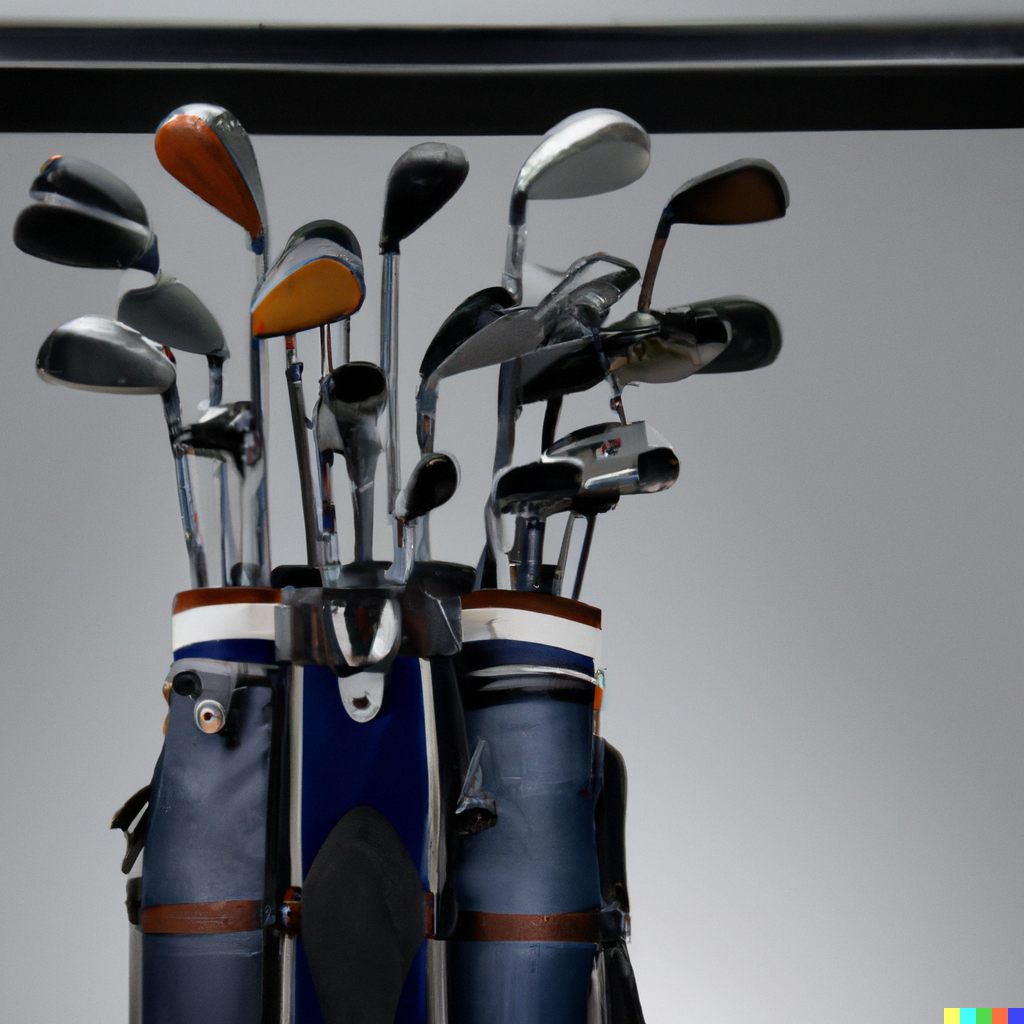- Home
- Golf Clubs
- Beginner Golf Clubs
Mastering the Fairway: A Beginner's Guide to Choosing the Perfect Golf Clubs
Embarking on your golf journey? The key to a successful start lies in choosing the right beginner golf clubs. In just a few sentences, we'll unlock the secrets to selecting clubs that not only match your skill level but also enhance your playing experience. Whether you're looking for durability, affordability, or the best technology, our guide has you covered. Plus, don't miss our FAQ section at the bottom for quick insights if you're in a hurry. Get ready to tee off with confidence and join the ranks of golf enthusiasts!
Are you new to the world of golf and feeling overwhelmed by the myriad of club options available? Selecting the right golf clubs can be a daunting task for beginners. With so many types, sizes, and brands, it's easy to get lost in the details and forget what really matters.
Remember, the wrong set of clubs can not only hinder your learning curve but also affect your enjoyment of the game. You might find yourself struggling with clubs that don't suit your playing style or physical attributes, leading to frustration and a lack of progress.
In this comprehensive guide we'll navigate through the essential aspects of selecting beginner golf clubs. From understanding the significance of each type of club to choosing the right fit for your body and skill level, we've got you covered. We'll also delve into the nuances of golf club technology and how it can aid your game. By the end of this article, you'll be equipped with the knowledge to make an informed decision, ensuring your first set of golf clubs is a stepping stone to a rewarding golfing journey.
 Unlock the Secrets to Choosing Your First Golf Clubs!
Unlock the Secrets to Choosing Your First Golf Clubs!What Are the Essential Golf Clubs for a Beginner?
As a beginner in the world of golf, stepping onto the green for the first time can be as exhilarating as it is intimidating. The vast array of clubs in your golf bag might seem like a puzzle waiting to be solved. Let me share a bit of my journey and how understanding the essentials made a world of difference.
The Basics: Understanding Your Golf Bag
When I first started, I was clueless about what each club was for. It's crucial to know that a standard golf set includes drivers, woods, irons, wedges, and a putter. But do you need all of them as a beginner? Not necessarily.
1. Driver: The club with the longest shaft and largest head, ideal for the tee-off on long holes. It's designed for distance, but it can be challenging to control for beginners.
2. Irons: These are your versatile friends. Ranging from 3-iron to 9-iron, they differ in loft (angle of the club face). As a beginner, you might want to focus on the 7-iron and 9-iron, known for their usability.
3. Wedge: Essential for short-distance shots, especially near the green. The pitching wedge is a good start for beginners, helping with a variety of shots.
4. Putter: The most used club in your bag. It's used on the green for rolling the ball into the hole. A comfortable and reliable putter is a must.
5. Hybrids: A mix between woods and irons, these clubs are gaining popularity for their ease of use. They can be a great asset for beginners, replacing long irons and woods.
I remember my first time at a golf course, armed with a borrowed set of clubs. The 7-iron quickly became my go-to. It was forgiving and versatile, making it easier to focus on my swing rather than the club. As I progressed, I started experimenting with different clubs, but the 7-iron remained my trusty companion.
Tips for Beginners
Start Simple: Don't overwhelm yourself with too many options. Begin with a few clubs and gradually expand your range.
Seek Advice: A professional fitting can be invaluable. It ensures your clubs are suited to your height, swing style, and grip size.
Practice: Spend time at the driving range. Getting comfortable with a few clubs is better than struggling with many.
In golf, as in life, starting with the basics and gradually building your skills is often the key to success. As a beginner, focus on getting comfortable with a few essential clubs. Remember, it's not about having the most clubs, but mastering the ones you have.
Next, let's explore how to choose the right golf club size and type for your skill level.
How to Choose the Right Golf Club Size and Type for Your Skill Level?
Selecting the right golf club size and type is a pivotal step in your golfing journey. It's not just about the aesthetics or brand; it's about finding a club that feels like an extension of your arm. Let me share how I navigated this crucial decision.
Understanding Club Size and Type
1. Length: The right club length is vital for a comfortable swing. Clubs that are too long or too short can lead to poor posture and swing mechanics.
2. Club Head: Beginners should look for clubs with larger heads for more forgiveness on off-center hits.
3. Shaft Flex: The flexibility of the shaft impacts your swing. Beginners often benefit from a more flexible shaft, which can help with slower swing speeds.
4. Grip Thickness: The grip should comfortably fit in your hands. Too thick or thin can affect your swing.
My Experience: Finding the Perfect Fit
When I started, I used a set of standard clubs. It wasn't until I had a few lessons that I realized they were too long for my height. This revelation came when I tried a friend's shorter irons and instantly felt more control and comfort. It was a game-changer.
Tips for Finding Your Fit
Get Measured: A professional fitting is worth the investment. They will measure your height, hand size, and swing speed to recommend the best fit.
Test Different Types: Try out various clubs at a driving range or store. Pay attention to how each club feels in your swing.
Consider Lessons: A few lessons with a pro can provide insights into what club characteristics suit your style.
The right golf club size and type can significantly impact your game. It's about comfort, control, and confidence. As a beginner, taking the time to find the right clubs for your physique and skill level is a step that pays dividends on the course.
Next, we'll delve into the importance of understanding golf club materials and technology, and how they can enhance your game.
 Master the Art of Golf: A Beginner's Journey Starts Here!
Master the Art of Golf: A Beginner's Journey Starts Here!Understanding Golf Club Materials and Technology: What's Best for Beginners?
Navigating the world of golf club materials and technology can be overwhelming for beginners. But understanding these aspects is crucial for enhancing your game. Let me guide you through this with insights from my own experience.
The Role of Materials and Technology in Golf Clubs
1. Materials: Clubs are typically made from steel, titanium, or a combination of materials. Each has its unique properties affecting weight, flexibility, and durability.
2. Technology: Modern clubs come with various technologies like perimeter weighting, adjustable heads, and low center of gravity designs, all aimed at improving performance.
As a beginner, I started with a basic set of steel clubs. It wasn't until I experimented with a titanium driver that I noticed a significant difference. The lighter weight allowed for a faster swing speed, and the larger sweet spot was more forgiving.
Tips for Beginners
Start with the Basics: Don't get overwhelmed by high-tech options. Begin with a basic set and upgrade as your skills improve.
Experiment with Rentals: Before investing, try different materials and technologies at a driving range or through rentals.
Seek Advice: Consult with more experienced players or a professional. They can provide valuable insights into what might work best for you.
The right materials and technology in your golf clubs can make a noticeable difference in your game. As a beginner, it's about finding a balance between what enhances your performance and what feels comfortable in your hands. Remember, the best clubs are the ones that feel right for you and complements your playing style.
Key Takeaways: Embarking on Your Golf Journey with Confidence
As we wrap up our comprehensive guide on beginner golf clubs, here are the key takeaways to keep in mind:
1. Choosing the Right Clubs:
- Start with a basic set tailored for beginners.
- Consider club composition (steel, titanium, etc.) for better performance.
- Use club fitting services for a personalized experience.
2. Understanding Club Technology:
- Embrace technology like perimeter weighting and adjustable heads for improved play.
- Experiment with different materials to find what suits your style.
3. Maintenance and Care:
- Regularly clean and store your clubs properly.
- Check for wear and tear and replace clubs as needed.
4. Engagement and Community:
- Share your golfing experiences with the Golfeaser community.
- Sign up for our newsletter for the latest tips and updates.
- Live by the Golfeaser Manifesto, embracing the spirit of the game.
Take Action and Engage
Now that you're equipped with the knowledge, it's time to take action. Start by selecting your first set of golf clubs. Remember, the journey of a thousand miles begins with a single step, and in golf, it starts with the right clubs.
Join the Golfeaser community today. Share your stories, triumphs, and challenges. Sign up for our newsletter to stay updated on the latest in golfing and live by the Golfeaser Manifesto, embracing the joy, challenges, and spirit of golf.
Your Next Step
Are you ready to embark on this exciting journey? What's the first golf club you plan to add to your bag? Share with us and let's celebrate each step in your golfing adventure. Remember, every champion started as a beginner, and every swing counts. Let's make those swings count together!
What's your first move in the world of golf? Share with us and join the Golfeaser community today! 🏌️♂️🏌️♀️🌟
Comprehensive FAQ on Beginner Golf Clubs
What are the best golf clubs for beginners?
What are the best golf clubs for beginners?
For beginners, the best golf clubs are those that offer forgiveness and flexibility. Look for clubs with larger clubheads, perimeter weighting, and flexible shafts. Brands like Callaway, TaylorMade, and Wilson offer great starter sets.
How much should I spend on my first set of golf clubs?
How much should I spend on my first set of golf clubs?
As a beginner, aim to spend between $200 to $500 on your first set of golf clubs. This range typically offers a good balance between quality and affordability. Avoid overspending on high-end clubs until you develop your skills and preferences.
What is the difference between steel and graphite shafts in golf clubs?
What is the difference between steel and graphite shafts in golf clubs?
Steel shafts are heavier and offer more control, making them suitable for players with a strong swing. Graphite shafts are lighter and provide greater flexibility, which can help increase swing speed, especially beneficial for beginners and players with slower swing speeds.
What are the most forgiving golf clubs?
What are the most forgiving golf clubs?
The most forgiving golf clubs have features like oversized heads, sweet spots, and perimeter weighting. Brands like Callaway, Ping, and Cobra are known for their forgiving clubs, ideal for beginners to improve their game.
How do I choose the right golf clubs for me?
How do I choose the right golf clubs for me?
Choosing the right golf clubs involves considering your skill level, swing speed, and physical characteristics. Beginners should opt for clubs that offer forgiveness and flexibility. It's also helpful to get fitted by a professional to ensure the clubs match your physique and playing style.
What are the essential clubs in a beginner's golf bag?
What are the essential clubs in a beginner's golf bag?
A beginner's golf bag should include a driver, a fairway wood, a hybrid, irons (5-9), at least one wedge (pitching or sand), and a putter. This selection covers a wide range of shots needed on the course.
How often should beginners practice golf?
How often should beginners practice golf?
Beginners should aim to practice golf at least once a week. Consistent practice is key to developing skills and muscle memory. It's also beneficial to mix range sessions with playing on the course to apply skills in different scenarios.
Is it better for beginners to have fewer clubs?
Is it better for beginners to have fewer clubs?
For beginners, having fewer clubs can simplify the game and make club selection easier. A basic set of essential clubs is sufficient to cover most situations on the course, allowing beginners to focus on improving their skills.
























